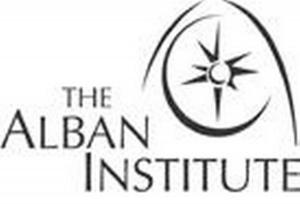Description
Innovative Practices for Archives and Special Collections
Nonfiction, Reference & Language, Language Arts, Library & Information Services| Author: | ISBN: | 9780810890947 | |
| Publisher: | Rowman & Littlefield Publishers | Publication: | May 22, 2014 |
| Imprint: | Rowman & Littlefield Publishers | Language: | English |
| Author: | |
| ISBN: | 9780810890947 |
| Publisher: | Rowman & Littlefield Publishers |
| Publication: | May 22, 2014 |
| Imprint: | Rowman & Littlefield Publishers |
| Language: | English |
Description: Innovative Practices for Archives and Special Collections explores how archives of different sizes and types can enhance the accessibility of their holdings. The book uses eleven case studies to demonstrate innovative ideas that could be transferred into many other settings.
Case studies cover
- Crowdsourcing the Description of Collections
- Early Experiences with Implementing EAC-CPF
- Conducting a Comprehensive Survey to Reveal a Hidden Repository
- Getting a Diverse Backlog of Legacy Finding Aids Online
- A Collaborative Standards-Based Approach to Creating Item-Level Metadata for Digitized Archival Materials
- Creating Policies and Procedures for Mandatory Arrangement and Description by Records Creators
- Collaboration in Cataloging: Sourcing Knowledge from Near and Far for a Challenging Collection
- Using LibGuides to Rescue Paper Ephemera from the Bibliographic Underbrush
- Describing Records, People, Organizations and Functions: The Empowering the User Project’s Flexible Archival Catalogue
- Integrating Born-Digital Materials into Regular Workflows
- Describing Single Items for Discovery and Access
These successful and innovative practices will help archivists and special collections librarians better describe their collections so that they can be successfully accessed and users can locate the right materials.
Readers can use these as models, sources of inspiration, or starting points for new discussions. The volume will be useful to those working in archives and special collections as well as other cultural heritage organizations, and provides ideas ranging from those that require long-term planning and coordination to ones that could be immediately implemented. It also provides students and educators in archives, library, and public history graduate programs a resource for understanding the variety of ways materials are being described in the field today and the kinds of strategies archivists are using to ensure collections can be found by the people who want to use them.
Description: Innovative Practices for Archives and Special Collections explores how archives of different sizes and types can enhance the accessibility of their holdings. The book uses eleven case studies to demonstrate innovative ideas that could be transferred into many other settings.
Case studies cover
- Crowdsourcing the Description of Collections
- Early Experiences with Implementing EAC-CPF
- Conducting a Comprehensive Survey to Reveal a Hidden Repository
- Getting a Diverse Backlog of Legacy Finding Aids Online
- A Collaborative Standards-Based Approach to Creating Item-Level Metadata for Digitized Archival Materials
- Creating Policies and Procedures for Mandatory Arrangement and Description by Records Creators
- Collaboration in Cataloging: Sourcing Knowledge from Near and Far for a Challenging Collection
- Using LibGuides to Rescue Paper Ephemera from the Bibliographic Underbrush
- Describing Records, People, Organizations and Functions: The Empowering the User Project’s Flexible Archival Catalogue
- Integrating Born-Digital Materials into Regular Workflows
- Describing Single Items for Discovery and Access
These successful and innovative practices will help archivists and special collections librarians better describe their collections so that they can be successfully accessed and users can locate the right materials.
Readers can use these as models, sources of inspiration, or starting points for new discussions. The volume will be useful to those working in archives and special collections as well as other cultural heritage organizations, and provides ideas ranging from those that require long-term planning and coordination to ones that could be immediately implemented. It also provides students and educators in archives, library, and public history graduate programs a resource for understanding the variety of ways materials are being described in the field today and the kinds of strategies archivists are using to ensure collections can be found by the people who want to use them.















